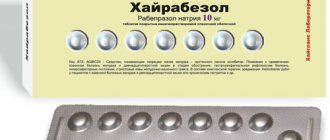Tenofovir-TL, 300 mg, film-coated tablets, 30 pcs.
Are common
Patients should be informed that treatment with antiretroviral drugs does not prevent the risk of transmitting HIV to others. Appropriate precautions should be taken during sexual intercourse.
Concomitant use with other drugs
Tenofovir should not be used concomitantly with drugs that contain tenofovir or adefovir. Concomitant use of tenofovir and didanosine is not recommended.
Osteonecrosis
Although the etiology of osteonecrosis is considered multifactorial (taking glucocorticosteroids, alcohol consumption, acute immunosuppression, increased body mass index play an important role in the development of this complication); There are reports of such cases, especially in patients with advanced HIV infection/or on long-term antiretroviral therapy. Patients should consult their healthcare provider if they experience symptoms such as lethargy, stiffness, joint pain, or difficulty moving.
Mitochondrial dysfunction
In vitro
and
in vivo,
the ability of nucleotide and nucleoside analogues to cause mitochondrial damage of varying degrees has been revealed. Cases of mitochondrial dysfunction have been observed in HIV-negative children exposed to nucleoside analogs in utero or immediately after birth. The main manifestations of mitochondrial dysfunction, often transient, were anemia, neutropenia, hyperlactatemia and increased plasma lipase activity.
Lactic acidosis, severe hepatomegaly with fatty degeneration
When nucleotide and nucleoside analogues, including tenofovir disoproxil fumarate, were used in HIV-infected patients in combination with other antiretroviral drugs, cases of lactic acidosis and severe enlargement of the liver with fatty degeneration, including cases with a fatal outcome, have been reported. Due to the high risk of developing lactic acidosis, special care must be taken when prescribing tenofovir to patients (especially overweight women) with hepatomegaly and fatty liver disease, with hepatitis, as well as in the presence of risk factors for liver damage. Clinical or laboratory signs of lactic acidosis can be detected several months after the start of treatment, but the development of this complication is possible in a shorter period of time. If the patient develops clinical (from the digestive system - nausea, vomiting, abdominal pain; general malaise, loss of appetite, weight loss; respiratory failure; neurological symptoms - impaired motor function, muscle weakness) or laboratory (lactic acid content in serum blood above 5 mmol/l) signs of lactic acidosis, or severe hepatotoxicity, tenofovir therapy should be suspended.
Patients
co-infected with HIV and hepatitis B or C virus
The risk of hepatotoxicity from antiretroviral drugs in patients co-infected with HIV and hepatitis B or C virus is higher than in those with HIV infection alone . Therefore, patients with chronic hepatitis B or C who are concomitantly taking antiretroviral drugs are at increased risk of adverse liver effects, possibly fatal. Such patients should be closely monitored, both clinically and laboratory.
Patients infected with both HIV and hepatitis B virus may experience severe exacerbations of hepatitis after stopping tenofovir therapy. In some cases, resumption of therapy for viral hepatitis may be necessary. In patients with severe liver disease (cirrhosis), it is not recommended to stop treatment, since exacerbation of hepatitis that occurs after discontinuation of therapy can lead to decompensation of liver function. Patients infected with HIV and hepatitis B virus should be closely monitored, both clinically and laboratory, for at least 6 months after discontinuation of tenofovir therapy. It is recommended that all HIV-infected patients be tested for hepatitis B virus infection before initiating antiretroviral therapy.
Caution should be exercised when prescribing nucleotide and nucleoside analogues to patients with concomitant hepatitis C receiving interferon alpha and ribavirin due to the high risk of developing lactic acidosis. Such patients should be subject to close clinical and laboratory monitoring.
Patients with impaired renal function
Tenofovir is excreted primarily by the kidneys. Renal disorders have been observed, including cases of renal failure, acute renal failure, increased creatine kinase levels and Fanconi syndrome (renal tubular damage with severe hypophosphatemia), which are associated with the use of tenofovir.
It is recommended that all patients have their creatinine clearance determined before initiating therapy, as well as during tenofovir therapy and as clinically indicated. In patients with threatened renal failure, serum creatinine and phosphorus clearance should be regularly monitored.
Therefore, the potential benefit of taking Tenofovir-TL should be weighed against the potential risk of toxic effects on the kidneys.
Avoid taking Tenofovir-TL simultaneously with nephrotoxic drugs or after recent use of them.
Liver diseases
Hepatotoxic reactions occur at different times during combination antiretroviral therapy. The risk of developing hepatotoxicity when using combination antiretroviral therapy is higher in patients with underlying liver dysfunction. Patients with liver disease receiving tenofovir as part of combination antiretroviral therapy should be closely monitored; If signs of deterioration in liver function appear, the possibility of interrupting or canceling therapy should be considered.
Triple nucleoside therapy
A decrease in the rate of virological response has been reported when prescribing triple therapy with nucleosides (tenofovir in combination with abacavir and lamivudine), as well as the development of resistance at the early stage of using this combination when taking drugs 1 time per day.
Effect on the skeletal system
In a clinical study, a decrease in bone mineral density was observed in the lumbar bones and femurs during treatment with tenofovir. Most decreases in bone mineral density occurred during the first 24 to 48 weeks and persisted throughout the 144 weeks of the study.
The bone health of HIV-infected patients with a history of pathological bone fractures and a risk of osteopenia should be monitored. If an abnormality in the skeletal system is suspected, an appropriate examination must be carried out.
Lipodystrophy
In patients receiving antiretroviral therapy, redistribution/accumulation of fatty tissue was observed, including central obesity, increased deposition of fatty tissue in the dorsocervical region (“buffalo hump”), a decrease in the volume of peripheral adipose tissue (decreased fatty tissue in the extremities), and a decrease in subcutaneous fat in the facial area, there may be breast hypertrophy and a “Cushingoid appearance.” The mechanism and long-term consequences of these effects are currently unknown. A cause-and-effect relationship has not been established.
Early virological failure
In clinical trials in HIV-infected patients, a number of therapeutic regimens using only three nucleoside reverse transcriptase inhibitors have been shown to be generally less effective than triple regimens using two nucleoside reverse transcriptase inhibitors in combination or with a non-nucleoside reverse transcriptase inhibitor , or with an HIV-1 protease inhibitor. In particular, early virological failure and a high frequency of mutations (substitution type) causing the development of resistance have been reported. Based on this, regimens involving the use of three nucleoside inhibitors should be used with caution. Patients whose regimen includes the use of only three nucleoside inhibitors should be closely monitored; in such cases it is also recommended to consider changing the treatment regimen.
Immune reconstitution syndrome
The development of immune reconstitution syndrome has been observed in HIV-infected patients receiving combination antiretroviral therapy.
Against the background of restoration of immune function at the beginning of combination antiretroviral therapy, exacerbation of asymptomatic or residual opportunistic infections (infection caused by Mycobacterium avium and/or Pneumocystis jirovecii, cytomegalovirus infection, pneumonia or tuberculosis) may occur, which may require additional examination and treatment. Such reactions are observed, as a rule, in the first few weeks or months of using antiretroviral therapy, and patients should be under close clinical supervision of specialists experienced in treating patients with HIV diseases. Autoimmune diseases (such as Graves' disease, polymyositis and Guillain-Barre syndrome) have been observed in the setting of immune reconstitution, but the timing of initial manifestations varies and the disease may occur many months after the start of therapy and have an atypical course.
Impact on the ability to drive vehicles and machinery
Tenofovir-TL acts on the central nervous system and can cause dizziness, headache and other symptoms. It can also cause muscle weakness, myopathy. These adverse events may pose a risk to people while driving or engaging in activities that require concentration while taking this drug. If the described adverse events occur, you should refrain from performing these activities.
Precautions while using tenofovir disoproxil fumarate
Before taking tenofovir, tell your doctor or pharmacist if you are allergic to it; or if you have other allergies. This product may contain inactive ingredients that may cause allergic reactions or other problems. Talk to your pharmacist for more details.
Before using this medication, tell your doctor or pharmacist your medical history, especially of: kidney problems, liver problems (eg, hepatitis C, cirrhosis), bone problems (eg, bone disease, bone loss/osteoporosis, weakness/ bone fractures), pancreatic disease (pancreatitis), alcohol consumption.
This drug may make you dizzy. Alcohol or marijuana (cannabis) may make you dizzy. Do not drive, use machinery, or do anything that requires alertness until you can do it safely. Limit your consumption of alcoholic beverages. Talk to your doctor if you use marijuana (cannabis).
Also limit your alcohol intake because it may increase your risk of liver problems and pancreatitis.
Before having surgery, tell your doctor or dentist about all the products you use (including prescription drugs, nonprescription drugs, and herbal products).
During pregnancy, this medication should be used only when absolutely necessary. Treatment can reduce the risk of passing HIV to your baby, and tenofovir may be part of this treatment. Discuss the risks and benefits with your doctor.
This medicine passes into breast milk. Consult your doctor before breastfeeding. If you have HIV infection, do not breastfeed because breast milk can transmit HIV.

